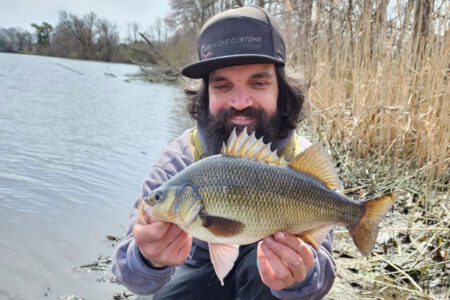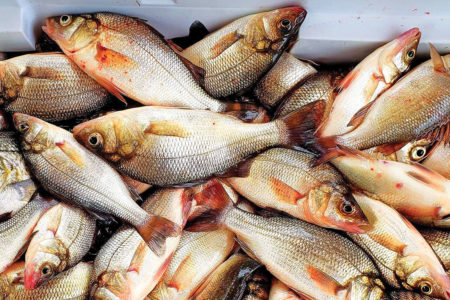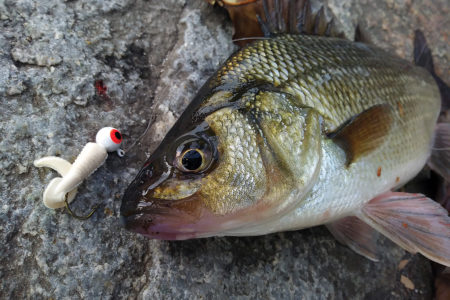These relatives of the striper fight hard, willingly hit artificials and can be caught throughout the winter months.
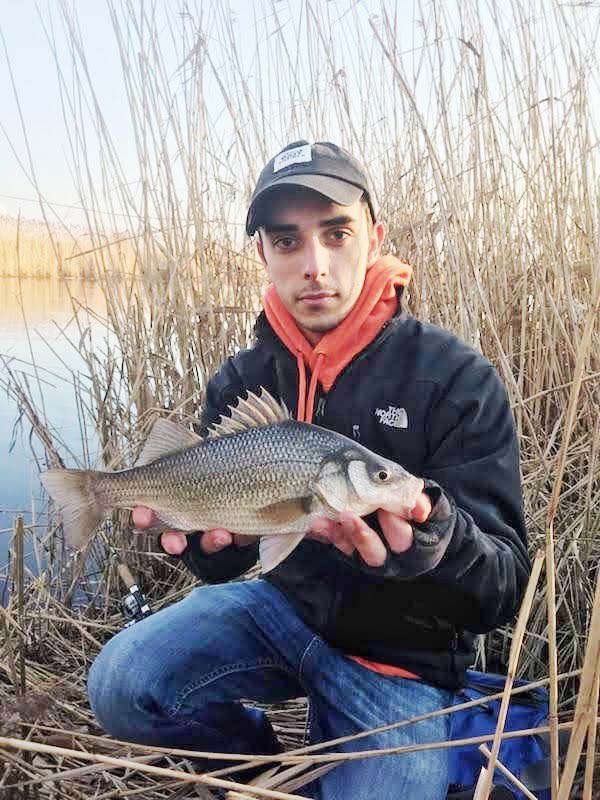 Once stripers depart our beaches and bays, that is the tell tail sign that winter is taking a full grasp on the Northeast and fishing related opportunities are reduced to just a handful of options. The tinkering of tackle in the basement or garage can only occupy someone for so long until the usual cabin fever sets in. Attending the winter flea markets and outdoor shows can satisfy some, but makes others even more eager to hit the water. I for one like that idea, so why not hit the water?
Once stripers depart our beaches and bays, that is the tell tail sign that winter is taking a full grasp on the Northeast and fishing related opportunities are reduced to just a handful of options. The tinkering of tackle in the basement or garage can only occupy someone for so long until the usual cabin fever sets in. Attending the winter flea markets and outdoor shows can satisfy some, but makes others even more eager to hit the water. I for one like that idea, so why not hit the water?
The past few winters here in the Northeast were considered mild with many 40- to 50-degree days making fishing through the off-season not only tolerable, but in fact comfortable. The mild temperatures have also enabled local ponds and tidal creeks to remain relatively free of ice. Under these conditions, there is little reason to not wet a line during the long, dark days of winter.
The majority of tidal creeks on Long Island are the main areas where you will find life during the winter months and are where I will start my prospecting for the striped bass’ little cousin, the white perch. These little striper descendants are great winter fun. They fight hard, hit artificials and take on the same traits and habits of striped bass. They also are very good table fare and the perfect winter choice for striped bass fans.
What To Throw At Them
White perch are ravenous feeders that will eat practically anything they can fit in their mouths. For the most part, they forage on small killies, grass shrimp and spearing that are found in the tidal creeks and ponds. I try to make most of my offering imitate those baits but I have also caught and cleaned perch that had glass eels (juvenile eels), scuds, aquatic bugs and even snails in their stomachs. For the most part, when I target whites I am using artificial lures. The good thing about perch is they are still a panfish, so they will gladly hit half a night crawler fished on a float or mini high-low rig.
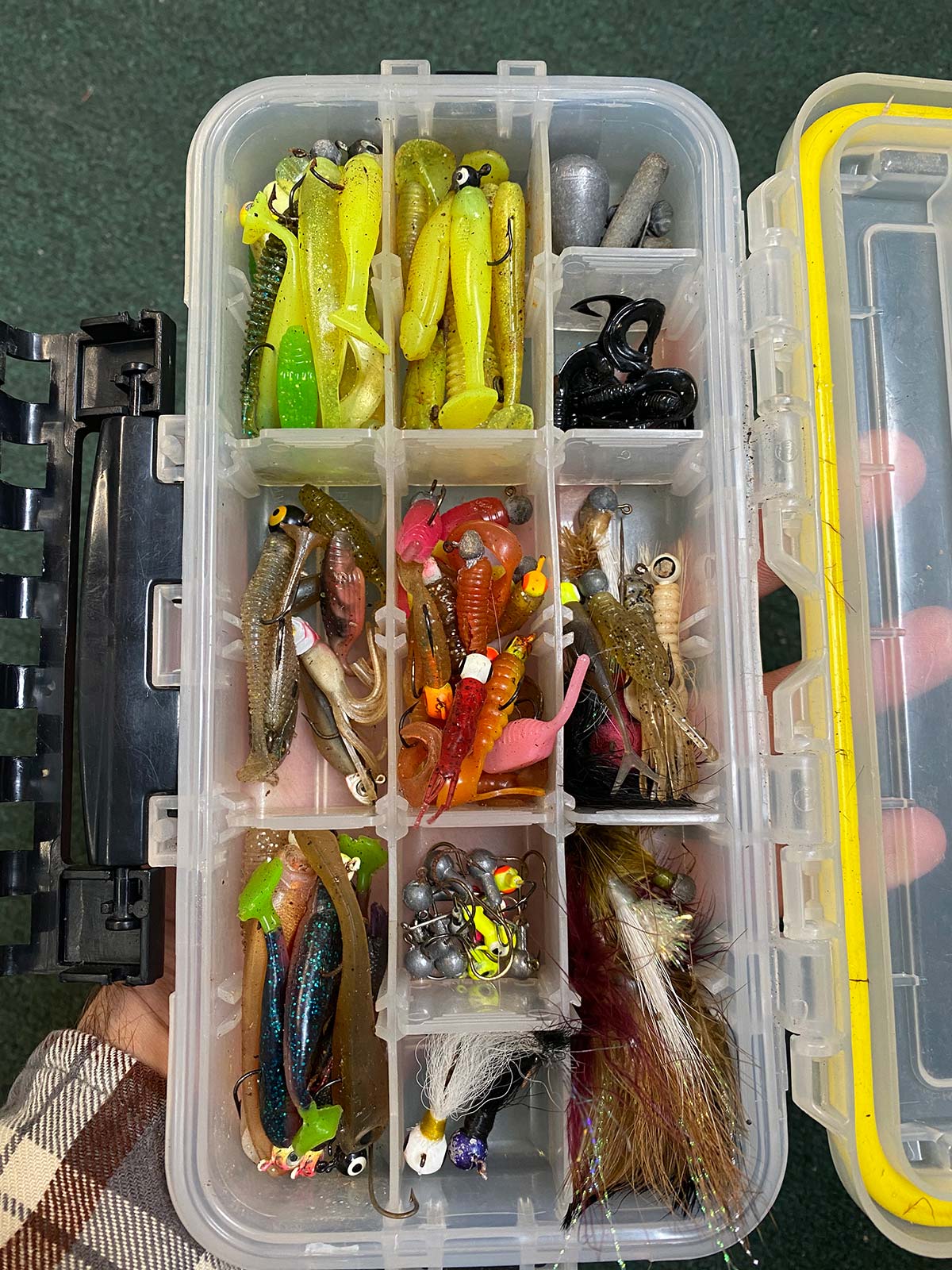
My artificial picks for white perch are varied but they all get grouped into similar categories to suit certain conditions and circumstances. What I have found though, is they are a very curious fish, so they like baits that draw attention emitting a vibration and fluttering type action. The majority of the lures I use are soft plastics fitted to a 1/16-ounce jig head. I will use larger 1/8-ounce heads on occasion if longer casts are required, or if I have a wind in my face, but for the most part the 1/16-ounce is a pretty versatile size for most of the areas I fish for white perch.
Most of the baits I use will be in the 1.5- to 2-inch size, but I have caught perch on 4-inch swim shads intended for stripers, so it may not hurt to think outside the box sometimes. I have come to like the panfish series of soft plastic made by Bass Assassin. They make a Crappie Dapper, which is a 2-inch swim bait that comes in a huge array of colors and gives off a lot of action. The other bait by Bass Assassin is the Tiny Shad. It is a tiny minnow profile bait that has a thin quivering tail. It gives off just enough motion to draw in any perch nearby.
An old time favorite and still effective to this day is a 1- to 2-inch curly tail grub. A grub is a pretty versatile little lure that I always include in my bag. They imitate much of a perch’s forage and are pretty easy to find in stores so I always have a few sizes and colors at the ready. Finally, a soft plastic I highly prize is the Gitzit Little Tough Guy. This little minnow imitation is a dead on replica of a little killie or spearing. They come in some attractive colors and cast very well.
Another segment artificials that will attract white perch includes hair jigs and marabou jigs. These I tie myself on 1/16- to 1/8-ounce round head jigs. I typically tie them in natural colors to be used in clearer water on calmer days. I include a bit of flash to the jigs for added attraction. I have also experimented and tied up some hair jig to replicate grass shrimp and quickly found them to be effective.
As for colors, I have a rule of thumb – brighter colors on overcast days or in dirty water and natural colors on sunnier days or in clean water. The retrieves for most of these lures is a slow steady reel with a constant dance of the rod tip, much like jigging for fluke. I’ll retrieve the jigs about three feet and then let it drop. Most times it’s on the drop that you get hit. White perch are a quirky little fish, so if one retrieve isn’t working for you, trying a different approach can often trigger bites.
Tackle To Tangle
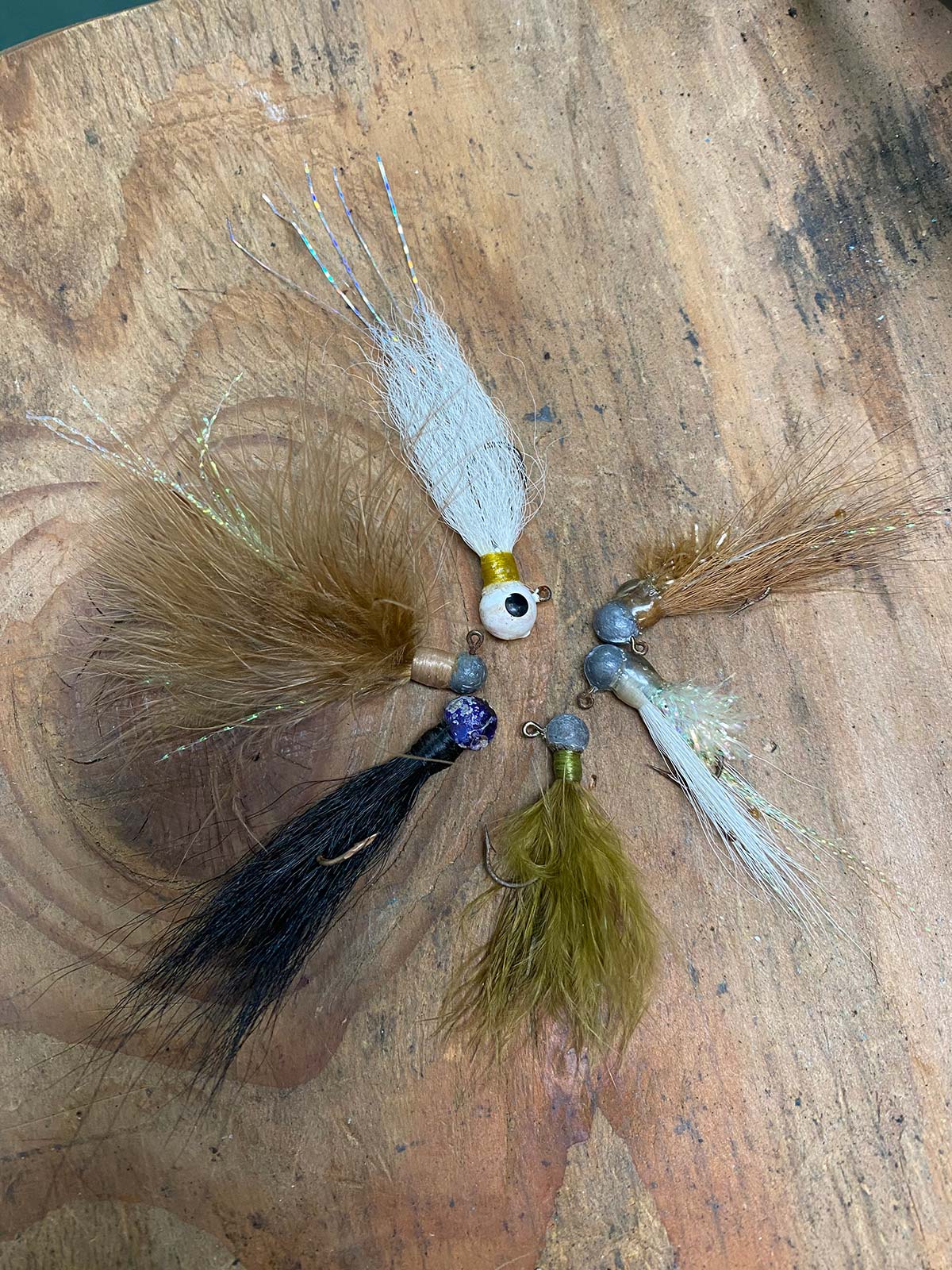
White perch are scrappy and tenacious fighters for their size, and they give a good account of themselves on the right tackle. I’ve even had some pop knots and break lines so don’t underestimate them. With the proper set up you could have a lot of fun catching fish from 6 to 12-plus inches. My preferred perch set up consists of a 1000-size reel, a 5.5- to 6.5-foot ultra-light or light action rod, and 4- to 8-pound test line. I personally prefer to use some of Shimano’s small reels like the Sedona, Sienna and Stradic. The key here is to have a good smooth drag and Shimano seems to excel in that.
As for the rods, there are many brands out there that fit the bill. Rod length is important being that most of this fishing is done in pretty tight quarters, with reeds, trees or bushes around you, and the shorter rod makes it easier to make longer and more accurate casts. The line I prefer is 4-pound mono. I like the mono because you can easily tie directly to your little jigs without using a leader. The mono doesn’t freeze as easily as braided lines. Also, the mono is way easier to tie on a cold windy day while your finger tips are numb. Try doing that with very thin braid – it’s no fun. You can opt out for a small clip if you like, but I have come favor tying direct because it makes for a more natural presentation.
Where To
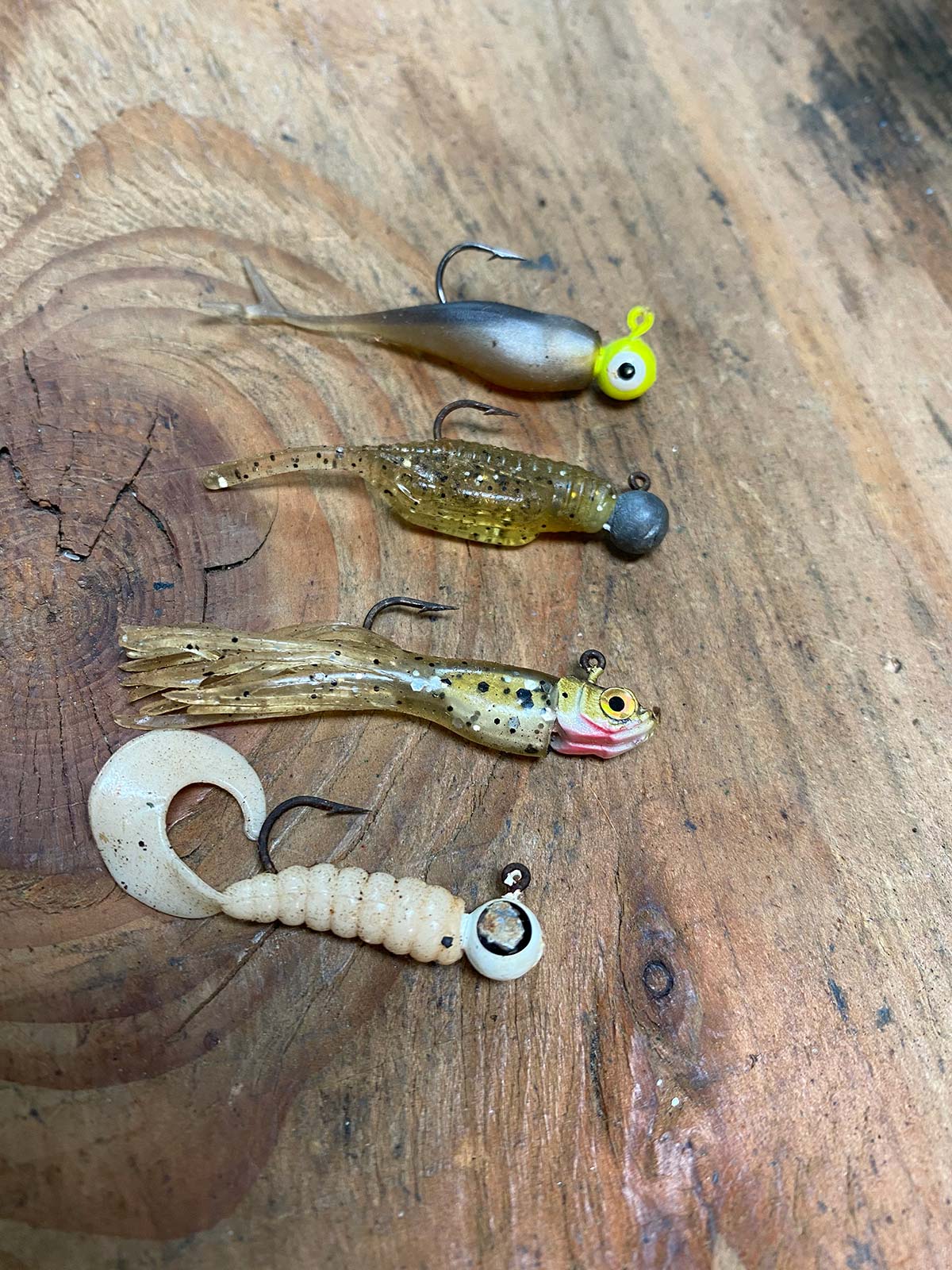
To start your search for white perch, it would be wise to look to the tidal creeks. They are a brackish water fish and are highly influenced by the tides. They can also be found in ponds that are sometimes tidal or near a saltwater source. Over the years I have found that the deeper water or the most water you can find is best. Moving current is a desirable spot for perch to set up because they can pick off any baitfish that get swept by with the current, just like their striped bass cousins. Usually the last two hours of the incoming and the first two hours of the outgoing are when I’ve had most of my perch action.
Don’t get me wrong though, I’ve caught them on the lower ends of the tides but I had to find the deepest areas of the creeks to get bites. When I show up to a spot I’ve never been to before I use a two or three rod system. I’ll set two bait rods out and cast around with an artificial. On one of the bait rods I’ll have a mini hi-low rig with half a night crawler on each hook and cast it out far. On the other rod I’ll have either another bait rig or a slip float rig and cast it in close. I stagger the rods because white perch are a nomadic fish, meaning they are always on the move. Having two rods out at different depths and distances increases my chances of getting attention from passerby perch. Casting around too is a faster way of finding fish or coming to the conclusion that it may be time to move on. Another main thing I look for every time I go out is to see if there is any type of bait in the area. If I see any killies or spearing in the shallows, or shrimp clinging to reeds or docks, that’s an indicator that perch could be near.
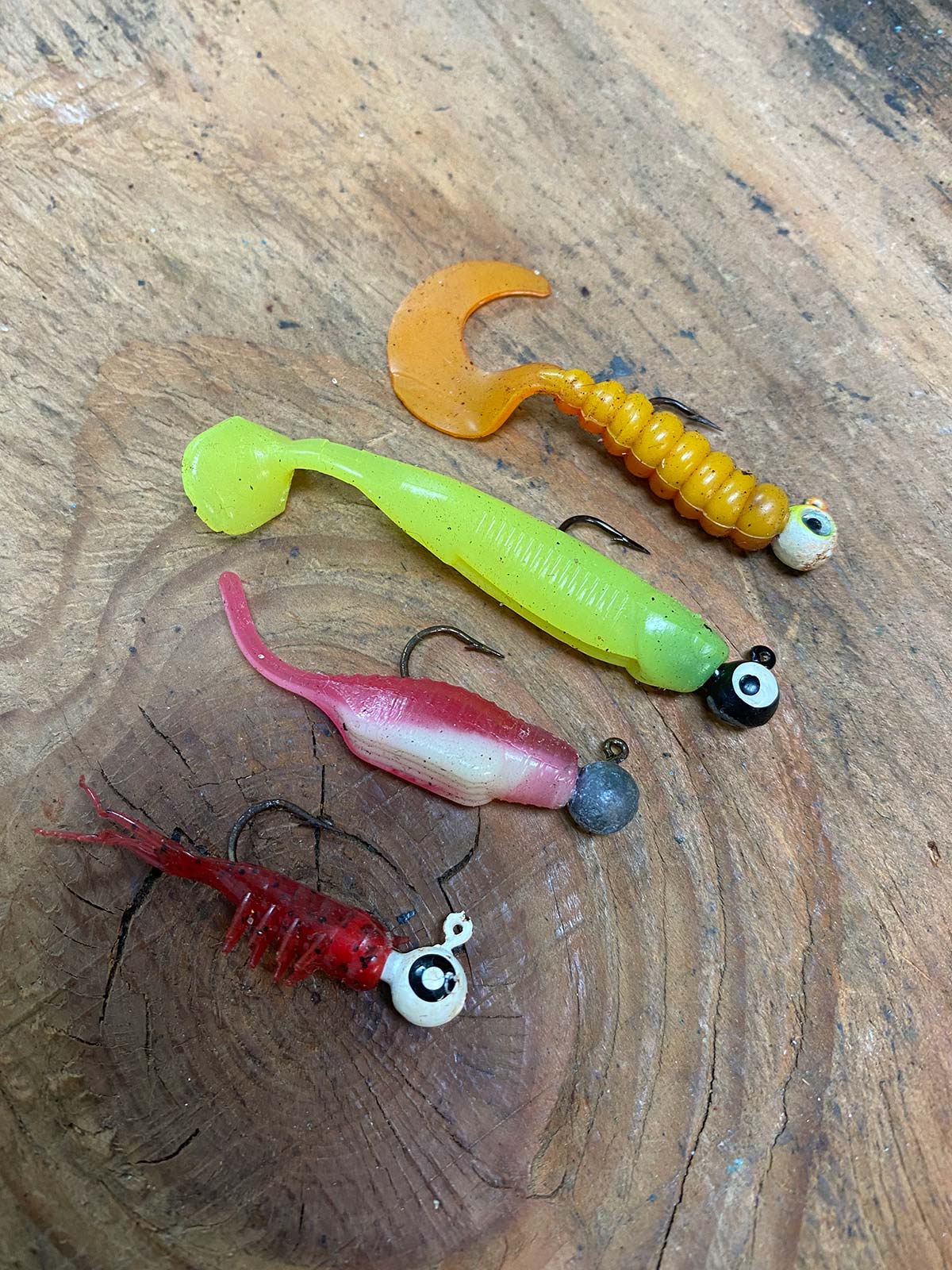
Winter white perch are a great alternative to pass the winter months here in the Northeast. They fight hard and hit a wide array of lures and baits. They can be caught from shore, boat or kayak and make great sport with the appropriate tackle. They are a slow growing fish, so if you do choose to take some home, apply the rule of “take what you need and not what you want.” They can be easily fished out, so some self-conservation is highly encouraged. While on your perch excursions don’t be surprised of you catch a few unintended species as well, like a hold over brown or rainbow trout, a schoolie striper wintering over or a hungry carp looking for its next meal. White perch are the kind of fish that need a degree of time to have good results.
You have to remember its winter and the fishing won’t be red hot every day, so if you get skunked four out of five outings, take note of what was different compared to the day you caught as to the days you didn’t – it could make a world of difference. If you haven’t tried it before, give it a whirl. You may be pleasantly surprised with the fun you can have during the typical boring months. I know these upcoming months won’t be so boring for me.

